It’s common knowledge that traditional floor rugs are often beautiful. Unfortunately, because of the labor-intensive means and high-quality fabrics that are used to make them, they’re often out of the reach of most consumers. However, as technology improves, replica rugs are starting to more closely resemble their traditional counterparts, and lower prices mean that nearly anyone can now afford one, helping to fuel the market.
Below, we’ll take a look at unique rugs from around the world, including Persian, Kashmir, Oriental, and more. Discover how your business can thrive by adding originals or imitations to your inventory.
Table of Contents
Market growth expectations
Traditional rug designs from around the world
Conclusion
Market growth expectations
According to Custom Market Insights, the global rug market is valued at US $200.63 million and is forecast to be worth US $294.98 by 2032, growing at a CAGR of 5%.
Keyword search volumes
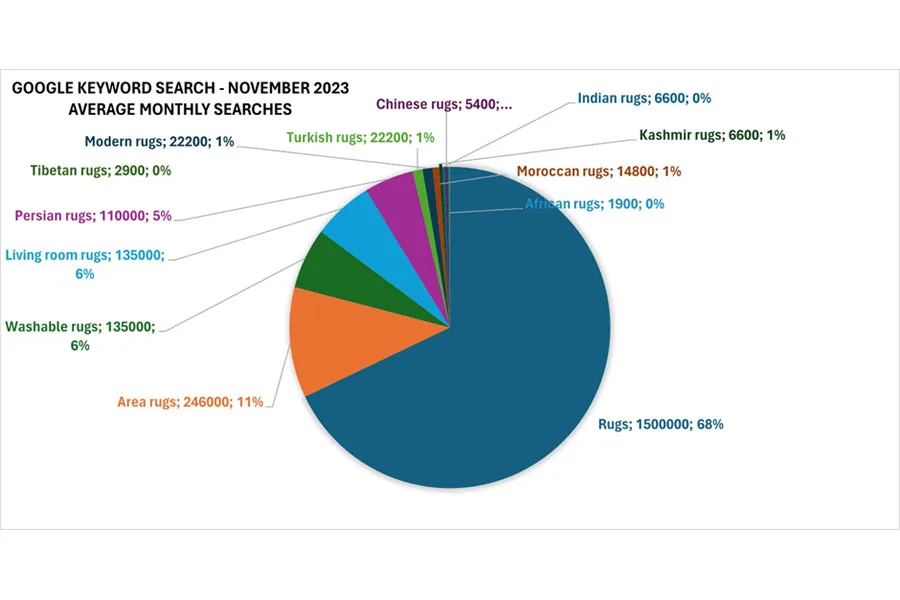
In addition, Google Ads shows that “rugs” attracted an average of 1,500,000 searches in November 2023. “Area rugs” came next with 246,000 searches, while “washable rugs” and “living room rugs” shared the same average volume of searches at 135,000. The remaining keyword searches range from 110,000 to 1,900.
While keyword searches don’t indicate purchases, they do show consumer interest. Other indicators of interest in this market are the driving forces that are encouraging purchases, which we will now look at.
Driving forces behind rug sales
Marketing research shows that there are five primary drivers behind rug sales, including:
- The increasing demand for natural, eco-friendly, and sustainably produced products
- Continuing ecommerce growth
- Disposable income increases
- The rising popularity of interior design
- Rug customization possibilities to meet customer expectations
Consumers increasingly wish to furnish their homes with natural products. With regard to rugs, this interest means that they want floor rugs made with natural fibers.
In addition, as disposable income grows, so too do people’s wish to improve their interior living spaces, especially via tailor-made one-off items.
Now we’ll take a look at the most popular traditional rugs for interior décor.
Traditional rug designs from around the world
Below we’ll take a look at seven famous rug types, providing price comparisons as a guide for what ranges buyers can expect between original retail and wholesale prices and authentic versus synthetic rugs. Buyers may want to consider stocking originals or copies to meet interior the design demands of specific target markets.
Afghan rugs
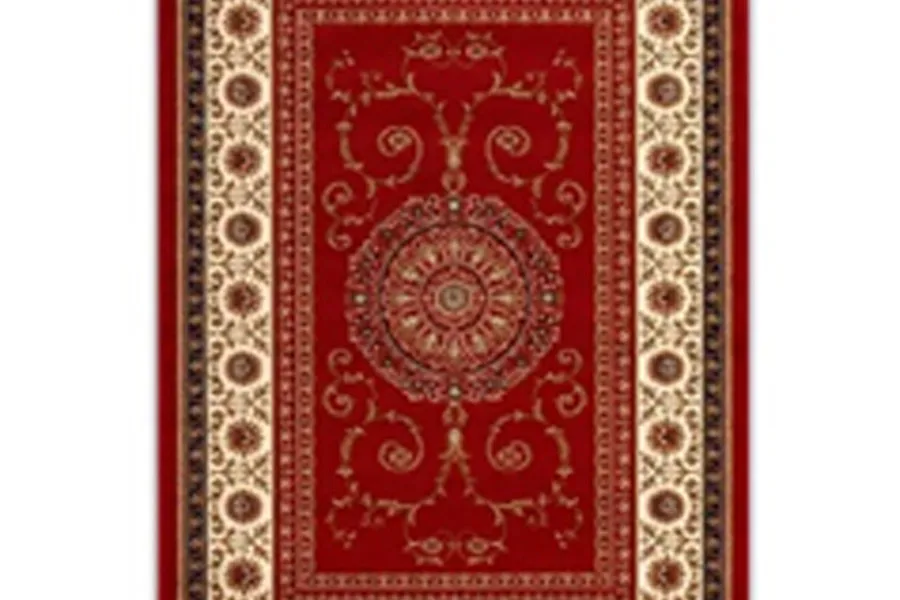
The main distinguishing feature of true Afghan rugs is their deep red colors. This rich, dark background is often interspersed with lighter blue and beige shades.
Rug patterns frequently feature Göl or octagonal shapes in rows. Stars and flowers typically dominate patterning on the deep red backgrounds.
High-quality Afghan rugs are hand-knotted from wool, with the number of knots usually determining the quality of the rug and its texture. True Afghan rugs do not have separate fringes, as these form part of the rug.
Many suppliers mimic Afghan rug patterns using synthetic materials and machining. These rugs often look beautiful and are much cheaper than authentic Afghan rugs.
A hand-knotted Choubi Afghan rug measuring 9′ x 12′ will cost approximately US $3,999. A synthetic copy will cost about US $30 or less.
Chinese floor rugs
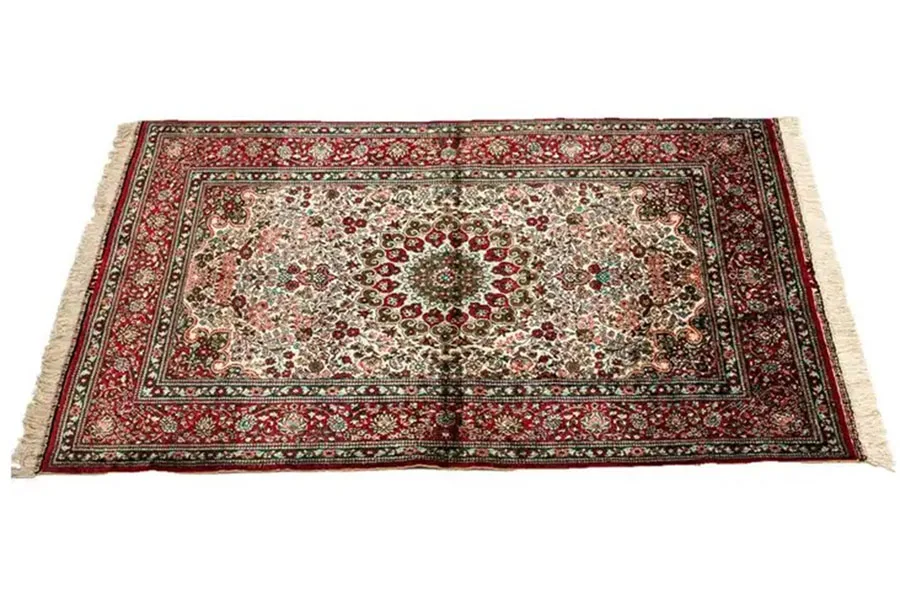
Blue is the dominant color in Chinese rugs. Pattern inspirations come from traditional symbols such as dragons, flowers, and works of art. Weavers originally used natural fibers like wool and cotton knotting to make small rugs.
Coarse or fine knotting is used for rugs with shorter to denser rug piles. These rug making skills followed those of Persia and adorned the imperial courts of China in the 15th and 17th centuries.
Today, machining and synthetic fibers produce the same look and feel as original Chinese carpets. These polypropylene fibers are often washable and fire-resistant.
An antique Peking Chinese rug measuring 9′ x 11’8″ costs approximately US $6,500, while cheaper rugs made from silk will cost around US $80.
Indian rugs
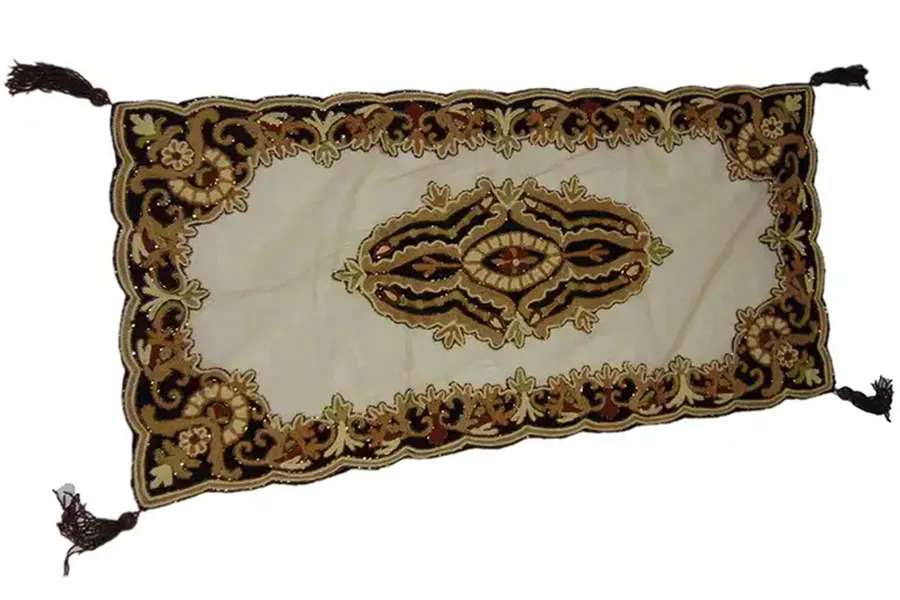
There are several types of traditional rugs native to India, including:
Namda: This Kashmiri-fed rug is felted with dense wool layers and flattened on each other. Then, it is topped with beautiful, hand-embroidered patterns.
Dhurrie: A rug with a flat weave, pastel colors, and flowing patterns made from many materials (silk, jute, cotton, wool, chenille). Dhurries work well as indoor-outdoor rugs for sleeping or in kitchens.
Kilim: Similar to the dhurrie, kilim rugs have a flat weave. However, this rug is characterized by strong colors and geometrical or tribal patterns.
Kashmir: Natural fibers like wool, silk, and sometimes a blend of these materials are hand-knotted to create Kashmir rugs. Designs are often floral (chinar tree, tree-of-life) and intricate.
A hand-knotted Kashmir 8’11” x 11’10” rug will cost in the vicinity of US $5,200. Cheaper Kashmiri rugs cost between US $1,3,00 and US $2,000. Kilim or dhurrie rugs are available at US $39 and less for 10 square feet.
Moroccan rugs
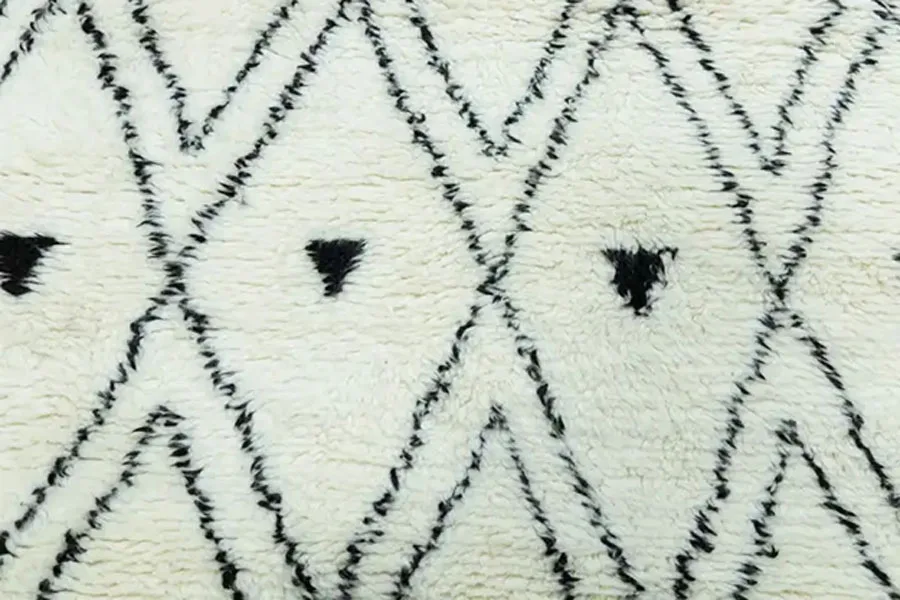
Many tribes throughout Morocco make floor rugs. Each region uses unique techniques, yarns, colors, and designs to express its traditions.
A woolen Moroccan rug measuring 9′ x 12′ can cost as little as US $2,240 or as much as US $5,660 depending on the thickness of the pile, design intricacy, and more. Examples of bulk prices from wholesalers range from US $20 to US $35 for 10 square feet.
Persian rugs
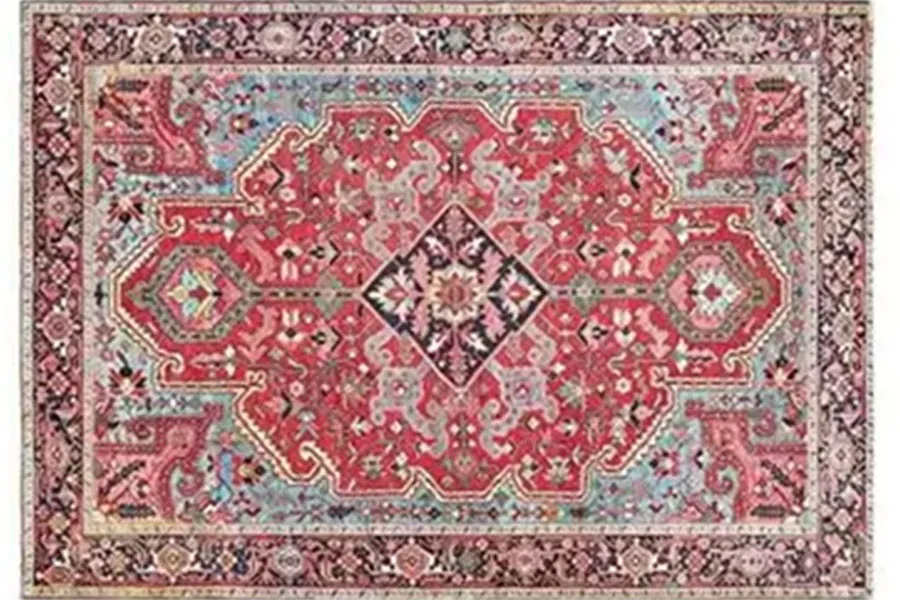
Persian rugs are made by hand-knotting silk, cotton, or wool. As with many rugs, they often reflect the traditions, materials, and designs of origins.
In Persian rugs, this diversity is often shown in intricate designs, from clouds to geometrical shapes, arabesques, and sometimes animals or people.
These unique expressions, as well as the size, region, colors, yarns, designs, and high or low pile, affect the costs. Additionally, the workmanship and labor hours also significantly impact the prices of these products.
For example, a Kazak rug measuring 9’10” x 11’5″ costs about US $2,750. In contrast, a smaller Qashqai of 7’5″ x 11’6″ can be as much as US $7,700. Forty-foot wool and cotton copies sell for US $54. Cheaper polyester Persian rugs are available for approximately US $10 for around 24′ x 52′.
Tibetan rugs
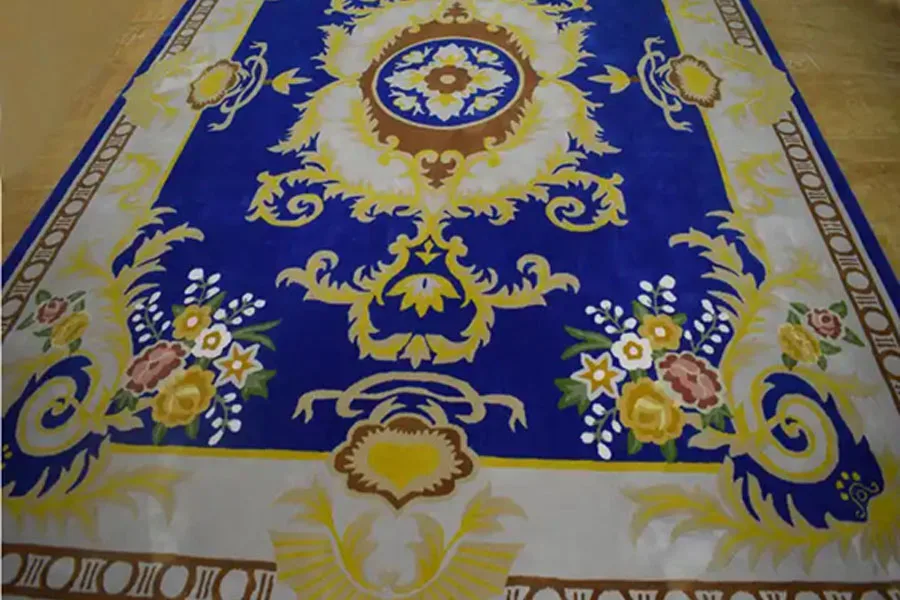
Tibetan rugs too follow the styles of their origins. In the past, Tibetan rugs featured earthy colors made from wool using techniques unique to the area.
Since then, the colors of these rugs have become brighter. Patterns feature dragons, phoenixes, flowers, and nature-inspired designs. Many of these wool rugs exude comfort and warmth.
One Tibetan wool rug with 150 knots measuring 3′ x 6′ costs US $872. Another example is a meditation mat with the same measurements and knot count, costing US $1,020. One example of a modern Tibetan rug made from natural and synthetic fibers costs US $99 per 10 square feet.
Turkish/Anatolian rugs
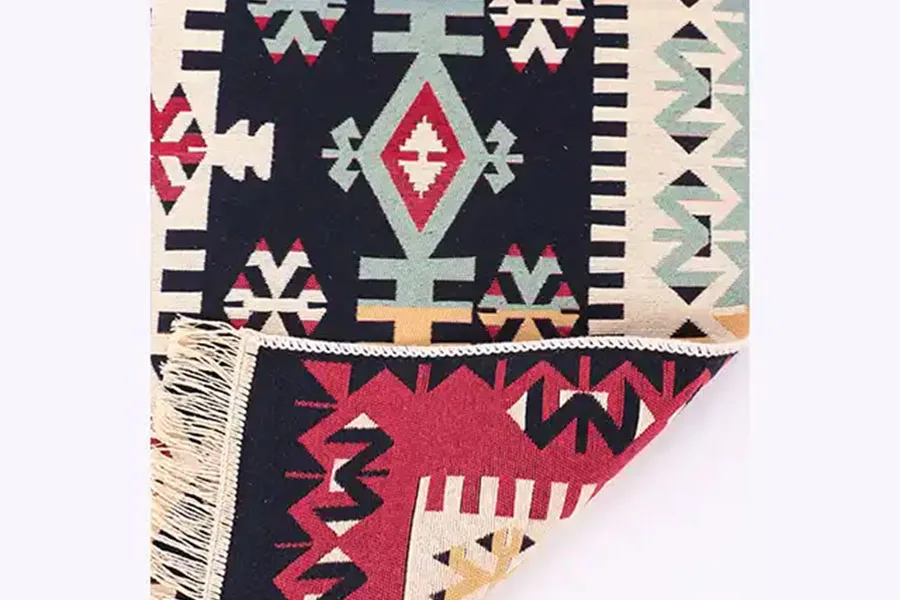
Rug-making is also an ancient tradition in Turkey. Influenced by the ancient Greeks, Turkish or Anatolian rugs have four main types: Kayseri, often used as prayer rugs, are famous for their beautiful geometric designs; oushak or usak rugs, made using silk and wool and showcasing medallions, stars, and other designs; and kilims, usually used as blankets, cushions, prayer rugs, bed covers, and more. Most Turkish rugs use a knotting technique known as Ghiores or Turfbaff.
Original Turkish rugs will set you back between US $500 to US $5,000. Those made with cotton cost less than US $10.
Conclusion
From traditional to contemporary, rugs are embraced around the world, but their appreciation and the type of material you should stock will depend on your market.
If you’re looking for a rug for every household, browse the huge collection of traditional and modern items in the Alibaba.com Showroom.




